|
|
Print this review
Cebit
2005 – the main tendencies, terminals development line
CeBIT 2005. All materials.
Contents>>>
It is an open secret that at CeBIT companies exhibit solutions that are to play a dominant part on the market during the next year. After contemplating novelties in the field of terminals and their technologies, we can certainly conceive what the market will be this year. And now let us look at the actual state of affairs.
New middle class
The principal event of the exhibition was a presentation of models of the middle
class by various producers. The models of the cost range from 200 to 300 USD have
gained the maximum functionality for the first time. The common appearance of such
model runs as following: a 1.3 megapixel CMOS camera, an expansion slot for memory
cards, a screen of a large resolution, an MP3 player, and a Bluetooth support. In
2004 not many models possessed such functionality and they were few and stood out
against a background. In 2005 the number of such solutions have increased and they
begin playing a large role on the market as the segment grows the main one in most
markets and interest in low-end solutions is slowing all over the world (this
segment does not enlarge, still its market share remains large). Such models as
Siemens
CX75 and Alcatel
S853 are new devices. The product by Sony Ericsson,
namely K750i, is positioned higher. On the hand, the increasing pressure of new
models incites a depreciation of the present model series. Here two companies
bore the palm - Motorola, Sony Ericsson. Unique solutions have first fallen within
the segment of 200-250 USD. You can purchase Motorola
E398 for such money. And in
the segment Sony
Ericsson K700 is swiftly going down in price. Both manufacturers
naturally intend presenting their products for the middle segment and as with Sony
Ericsson the new 500 model's specification approaches that of Siemens CX75. The
models of this segment stir up interest with their price-quality relationship.
Even traditionally stable business models yield to them. The very same devices will
set the pace this year.
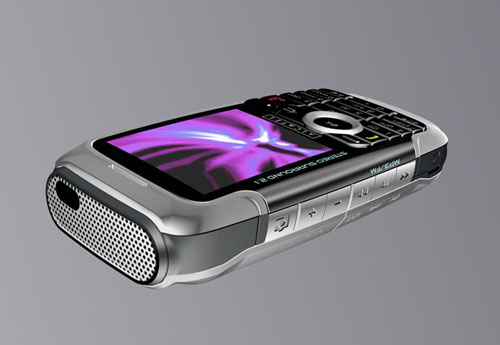
Photographing newly
Relatively inexpensive handsets of the middle segment use CMOS matrixes and the quality of photos is quite good under conditions of a sunny day, yet indoors a noise appears as photosensitivity of the matrixes is slender. Siemens S65 is an example of such photos.
Meanwhile companies strive for producing matrixes of a higher quality and position these products as a partial substitute for digital cameras. One can dispute whether the quality of matrixes is good, but production of hybrid devices is in full swing. The main task for such devices is just providing an acceptable quality of photos. If you think back the development of any technology, you can see they come through several stages. The initial stage is an innovation: the cost is high and the quality being low. In the second stage a mass realisation and an adaptation of it to a general audience are carried out. The cost goes down and the quality increases somewhat. The third stage is of the largest interest when a technology makes a qualitative leap and at the same time retains a low cost. Applying it to installed cameras, we can say the second stage have started and will last a year at least. The third stage will begin in the autumn of 2006 and the quality of cameras will compare to nowaday digital soapboxes, so many users will not need a separate digital camera. As experience has shown, most costumers do not concern themselves with digital photographing and are interested in a final result, namely a photo, and the mobile devices have a fair chance.
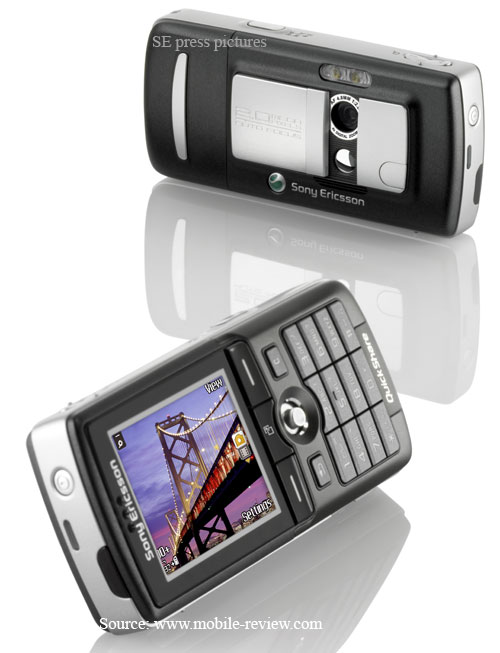
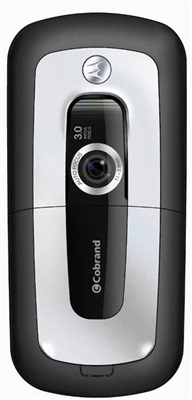
Principal improvements of installed cameras this year are also of an interest.
They are a mass inculcation of a macromode, an appearance of an autofocus, a matrix
of the resolution of 2 megapixels (Sony
Ericsson K750i). Products with matrixes of
a high resolution, such as 3 megapixels (Motorola
E1120, Samsung
Z700 and a GSM
variant of the model), will have start to be put out by the end of 2005. As for
the maximum resolution, we should mention the product by Samsung with a 5 megapixel
matrix (Asian model SCH250 and European analogue SGH-P860). Here you can see sample
photos by this device>>>
The release of CCD matrixes with 8x optical zoom that enable the next qualitative leap is to be expected at the turn of the year. The producers branches the devices with installed cameras of a high resolution in a separate class and position them apart from the main series. Such handsets partially intrude into the image segment. And a common price for similar devices will approximates to 400-500 USD this autumn. The manufacturers also attempt to unify a camera interfaces as much as possible and liken them to those of digital soapboxes in order to assure a quick adaptation to new models.
Ain't any photos and cameras in phones
Till recently companies have been put out non-camera variants of those models only in the low-end segment and at the beginning of the middle one. It was here that customers hardly pay for the additional function, unnecessary for them. The tide of public mood was rather predictable and proved a characteristic one for other segments. People were unwilling to overpay for an additional function. In 2005 the manufacturers met the wishes of customers and start offering non-camera versions of their models. There is a large quantity of such examples, they are Siemens SP65, that differs form S65 in the lack of a camera, and turning
Nokia
6020 into Nokia
6021. Almost either model of the middle
segment has its version without a camera installed. Yet the producers have played a practical joke on the custom. For a philistine's logic is quite simple: since there is no camera, I do not pay for that. In fact a sharp reduction in price does not occur, still a margin of such products increases for the company. These models are overpriced more than mass devices with a camera. And when buying a non-camera handset, you just overpay for your wish. The next explanation of a high cost is various prohibitions of using devices with a camera at enterprises and offices. They encourage a customer in buying another device, a non-camera working one. There appears a tendency towards an existence a cellular phone not merely as a vehicle for communication, but a division phones into a working and a personal ones. The producers are concerned with a development of the idea, for then the sale of handsets will drastically go up. And lobbying for a ban against phones, the manufacturers push up sales, oddly enough.
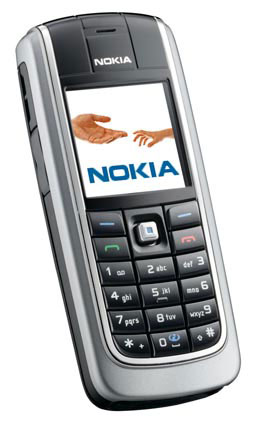
Image & business and image alone - forming of new segments
Thanks to the company of Samsung, a peculiar segment of image handsets with business
functionality was set up in the market. Samsung
D500 is the first example of such kind with
модель
D600 proceeding. The general properties are quite simple - providing the maximum functionality in the most attractive design. And a major cost accounts for not a realisation of any functions, though it is the most, but for an image constituent. In the wake of Samsung all the manufacturers will endeavour to present such devices.
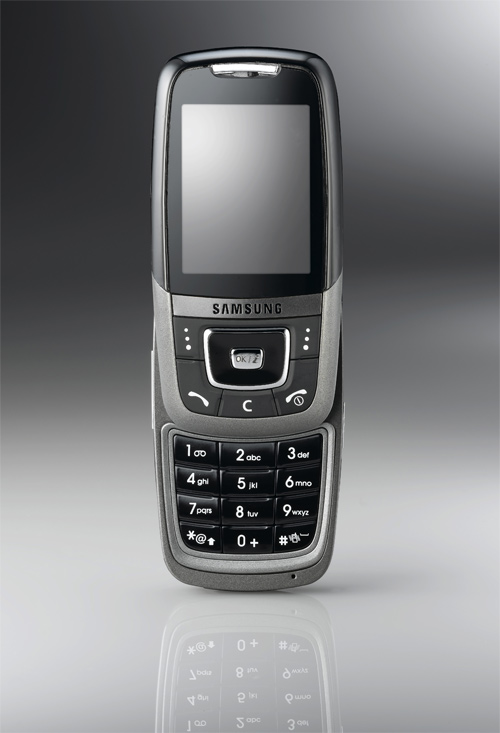
It is interesting that the companies have anew met the wishes of the custom that suppose a phone to be a mere vehicle for communication. New products of the middle segment with usual functionality (the minimum of functions and a telephone constituent emphasised) are entering the market expressly for them. Nokia 6020 and Nokia 6021 are among them. Besides a telephone constituent, a user needs some status, for otherwise one would hardly pay 200-300 USD for a device. And here appears the design. It is the design that a major cost of the similar products hides behind. The margin for these models is the most. The same principle as the models with a lacking camera works. It looks from the direction of the manufacturer in the following way: the custom requested and we have done, though for extra money.
A typical example of new products is Motorola
V8 SLVR as well as its derivatives Motorola
v270, Motorola
v280. The characteristic feature lies in a little thickness of their body.
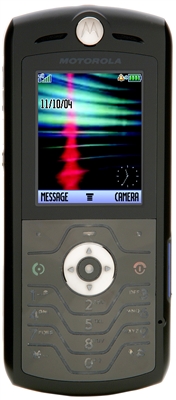
The elemental technique basis permits creating handsets with a little thickness of
their body and the pioneer in that is the company of Motorola which employs metal on
the body structure for heightening the effect. Samsung has presented X610 and will
present a series of analogous models in the immediate future. The other products do
not look so luxurious, though apply the same idea. The slender body is becoming a
style element. Clamshells by Panasonic of the VS (Visual Slim) series typify such
production. You can read about them in the report from the exhibition at Cannes.
MP3 player, memory card, and USB-communication
The realisation of an MP3 player in a handset is quite logical and does not differ in technique from special-purpose flash players. In a short while the quality of the players in handsets will rise to the level of standalones and large resources of adjustment will appear as well as a support of the most number of formats and radio or other external sources recording. The produce of this output is scheduled for the turn of 2005 and the beginning of 2006. At the primary stage such devices are of little interest and expensive. An example from the field is Sony
Ericsson W800 that will be promoted with the trademark of Walkman well-known in the market of portable audio equipment.

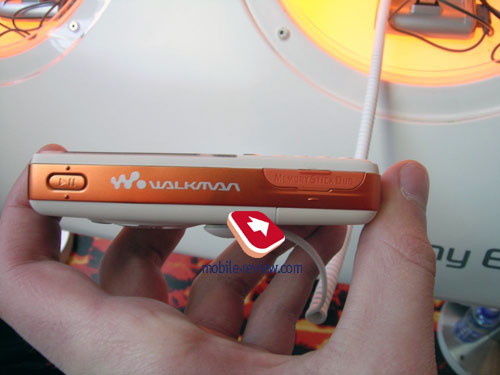

By the summer of 2006 the functionality of hybrid devices presented in the middle class will reach the nowadays level of the top models of flash memory. If you consider the fact that during this year the development of such players is actually to cease (merely crotchets about the design and screen improvements), you can detect market rivalry sharply arising. Cellular phones are constituting a threat to digital MP3 player for the following several years and this menace is rather real. The handset is now getting a universal device. The decline in sales of pocket computers is closely related to the development of the smartphone segment and the same is true for the MP3 player market. Annexing player software and a larger memory capacity to the handset equipped with a big screen, a processor is simpler than annexing a good screen to the existing player, for that would result in a cost increase by 30% at least. So we can draw the conclusion that in a year or a year and a half MP3 player price will slide down steeply and they will become very inexpensive.
Cellular phones do not threaten USB-sets, for flashes (as they are christened in everyday life) have turned into consumables in a sense as diskettes did formerly. The flash price is not high and this enables one to choose them to match one's needs. The handset acquires a direct PC connector and you should just plug in a cable to observe both the memory card and the device's memory contents. This provides the phones with a new functionality and turns them into compact containers of data of any format. The cellular phone indeed gets a device you always carry and feel attachment and even dependence. So it has become irreplaceable equipment.
Memory cards have already grown standard for the handsets by the present time and no changes are expected in the near future. The cards will be appearing in increasingly more number of devices. The struggle of formats continues, for either manufacturer attempts to propose its solutions. Sony Ericsson is traditionally promoting MS Duo, the Japanese companies concentrating on MMC/SD cards and their versions. Starting from the quantity of new reviews, we can conclude that the TransFlash cards will control the majority of the market. Their advantage lies in their small size (a half of a SIM card), a possibility of a hot change, and an adherence of the giants such as Motorola and Samsung to the standard. Nokia is promoting RS-MMC (recently DV RS-MMC) cards in its products.
In fact a hot change of memory cards has virtually become a standard and is presented in all new models.
Smartphones - new level of development, or pull and push
In spite of the successful exclusion of usual compact computers from the market, the smartphone does not get a prevailing device. They excel in large dimensions and ordinary handsets overtake them with the functionality included the delivery, i.e. with no additional manipulation. Young people like to experiment in setting up new programs, yet smartphones are usually expensive purchases for them. Upon the whole, a slow development of the segment with periods of an interest surge caused by several factors is observed. The first thing is that the company NTS has presented reference platforms enabling to create devices comparable to ordinary handsets in size. And this solves the main problems in dimensions. The miniaturisation itself produces good results and draws attention to smartphones. The next reason of the segment increasing is Nokia's proactive approach and staking on the development of smartphones exactly under the steerage of Symbian. The company supposes such products to get mass starting from the middle segment and to substitute for all usual models of the market. Since the turn of the current year the smartphone will start to substitute for usual products on the platform of 40. It is a bold solution and daring in a way, though a justifiable act. In 2006, due to such movement, the smartphone will appear in almost all segments, except the low-end segment from 100 to200 USD. On the other hand, sales of Motorola
MPx200 have displayed the tier of 200 USD to be surmountable. As in December of 2004 its price compared to 175-180 USD.
CeBIT 2005: smartphones by Samsung>>>
Line of development in 2006
In 2005 the companies are gradually begin switching to an output of devices of the third generation and at the beginning of 2006 there will be the situation that more that a half of novelties will turn out UMTS terminals. An equilibrium situation will remain during the whole 2006. Then the time of mere GSM products will be over and they will start leaving the market. Taking a view of the preceding, one can have a mistaken impression that phones have reached their summit, there is no need in developing them, and the growth will be only numerical (better polyphony, screens, cameras etc.). The manufacturers will really enhance the product performance. The general line of development is an extension of a diagonal axis and/or a screen resolution. The screen chromaticity will be also increased with a support of 16M colours being visible as with the switch from 4096 colours to 65K. Nowadays most screen with a support of 262K colours do not drastically differ in quality from good screens of 65K colours (you can recollect the screens by Sharp of triplets by Motorola). It is not clear whether full-colour OLED screens will appear at last. The technology remain experimental at present time. Still an attempt of creating three-dimensional screens seems rather real and these screen will not get mass as well as will not offer new opportunities.
In 2005 we will se the series of top model equipped with installed hard disks of the capacity from 2 Gb and higher. In 2006 such hard disk will become a standard in the middle segment and this gives fundamentally new opportunities of service arrangement. For instance, a customer will be able to use a device as a portable MP3 player and, what is more interesting, as a video player. Audio and video possibilities are getting dominant. A series of commerce services concerned with a mobile TV and uploading video on request has already appeared. As a matter of fact, the development of networks of the third generation impulse the development of such services, for they are interrelated.
The A-GPS function is know to be featured in the networks of the third generation as some attractive services with reference to the territory may be arranged using the function. But many producers will be able to use also separate full-blown GPS receiver that would give position functions not depending on the coverage. The creation of the European position system Galileo gives another stimulus such devices. Siemens SXG75 is among the pioneers of the terminals with a GPS receiver installed. It is interesting that Benefon has turned out an apologist of the idea. By the time consumer goods left the market the company had some intriguing solutions about the terminals of the next generation which excelled in small size.
Briefly, these are general improvements that are to appear in handsets in 2006. How much this review is true, we will see at CeBIT 2006.
CeBIT 2005. All materials.
Contents>>>
Eldar Murtazin (eldar@mobile-review.com)
Translated by Maria Mitina (maria.mitina@mobile-review.com)
Published — 21 March 2005
Have something to add?! Write us... eldar@mobile-review.com
|
News:
[ 31-07 16:21 ]Sir Jony Ive: Apple Isn't In It For The Money
[ 31-07 13:34 ]Video: Nokia Designer Interviews
[ 31-07 13:10 ]RIM To Layoff 3,000 More Employees
[ 30-07 20:59 ]Video: iPhone 5 Housing Shown Off
[ 30-07 19:12 ]Android Fortunes Decline In U.S.
[ 25-07 16:18 ]Why Apple Is Suing Samsung?
[ 25-07 15:53 ]A Few Choice Quotes About Apple ... By Samsung
[ 23-07 20:25 ]Russian iOS Hacker Calls It A Day
[ 23-07 17:40 ]Video: It's Still Not Out, But Galaxy Note 10.1 Gets An Ad
[ 19-07 19:10 ]Another Loss For Nokia: $1 Billion Down In Q2
[ 19-07 17:22 ]British Judge Orders Apple To Run Ads Saying Samsung Did Not Copy Them
[ 19-07 16:57 ]iPhone 5 To Feature Nano-SIM Cards
[ 18-07 14:20 ]What The iPad Could Have Looked Like ...
[ 18-07 13:25 ]App Store Hack Is Still Going Strong Despite Apple's Best Efforts
[ 13-07 12:34 ]Infographic: The (Hypothetical) Sale Of RIM
[ 13-07 11:10 ]Video: iPhone Hacker Makes In-App Purchases Free
[ 12-07 19:50 ]iPhone 5 Images Leak Again
[ 12-07 17:51 ]Android Takes 50%+ Of U.S. And Europe
[ 11-07 16:02 ]Apple Involved In 60% Of Patent Suits
[ 11-07 13:14 ]Video: Kindle Fire Gets A Jelly Bean
Subscribe
|







